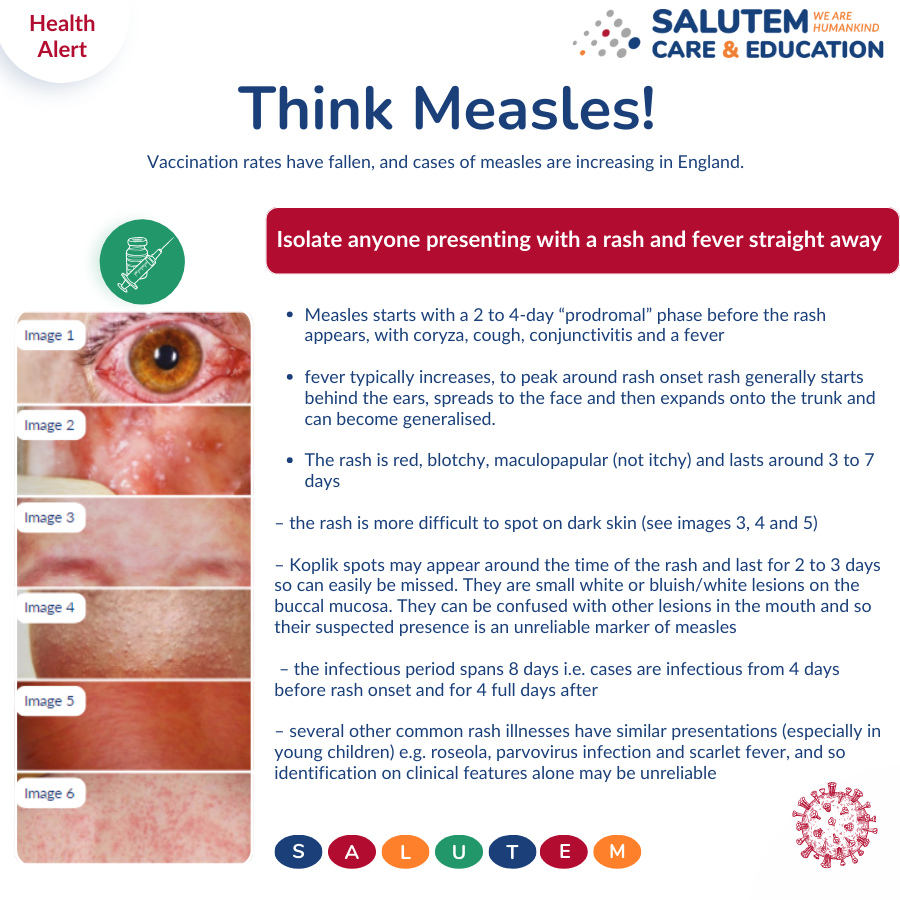Introduction
Measles, a highly contagious disease, has made a concerning resurgence in the West Midlands, with more than 200 confirmed cases reported in recent months, primarily in Birmingham. Despite the availability of a vaccine, the spread of measles serves as a stark reminder of the importance of vaccination and the need for public awareness. In this blog, we will explore the resurgence of measles and the signs and symptoms associated with this infectious disease.
Understanding Measles
Measles is a viral infection caused by the measles virus, and it is notorious for its contagious nature. It primarily spreads through respiratory droplets released when an infected person coughs or sneezes. The virus can remain viable in the air and on surfaces for several hours, making it easy to contract in crowded places or from contaminated surfaces.
Signs and Symptoms of Measles
Measles typically follows a specific pattern of symptoms, which can help in early detection and prevention of further spread. It is essential to recognise these signs to seek timely medical attention and prevent the virus from spreading. Here is what you should watch out for:
- Prodromal Phase: Measles often begins with a 2 to 4-day “prodromal” phase before the characteristic rash appears. During this phase, individuals may experience symptoms such as coryza (runny nose), cough, conjunctivitis (red, watery eyes), and fever.
- Fever: The fever tends to increase, peaking around the time the rash is about to appear.
- Rash: The hallmark sign of measles is the appearance of a rash, which usually starts behind the ears and then spreads to the face before expanding onto the trunk and extremities. The rash is red, blotchy, and maculopapular (not itchy) and typically lasts for around 3 to 7 days.
- It is important to note that the rash can be more challenging to spot on individuals with darker skin tones.
- Koplik spots may also appear around the same time as the rash. These are small white or bluish/white lesions on the buccal mucosa (inside the cheeks). However, they can be easily confused with other mouth lesions, making them an unreliable marker of measles.
- Infectious Period: Measles is highly contagious, and individuals infected with the virus are contagious from 4 days before the onset of the rash until 4 full days after. This extended infectious period increases the risk of transmission within communities.
Challenges in Diagnosis
Identifying measles solely based on clinical features can be challenging, especially in young children. Several other common rash illnesses, such as roseola, parvovirus infection, and scarlet fever, share similar presentations. This similarity underscores the importance of laboratory testing to confirm cases of measles and prevent misdiagnosis.
Conclusion
The resurgence of measles in the West Midlands is a concerning development, highlighting the need for increased vaccination efforts and public awareness. Measles is a highly contagious disease that can have serious complications, including pneumonia, encephalitis, and even death. Recognising the signs and symptoms, especially the characteristic rash, is crucial for early diagnosis and containment.
Vaccination remains the most effective way to prevent measles outbreaks and protect communities from this highly contagious virus. It is essential for individuals to stay informed about the importance of vaccines and to ensure that they and their children are up to date with their immunisations. By working together to increase vaccination rates and raise awareness about the signs of measles, we can help stop the spread of this dangerous disease and protect the health of our communities.



